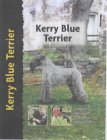
Kerry Blue Terrier (Pet Love)
Kerry Blue Terriers are one of the larger terrier breeds, about the same size as Irish terriers, and were developed as all-purpose farm dogs in Ireland. They share some similarities with Soft Coated Wheaten Terriers, which are also versatile, intelligent, Irish farm dogs. Kerry Blues are perhaps not as spectacularly good-looking as Soft Coated Wheatens, but they are an easier breed in that their coats are usually worn shorter, so they need much less grooming than a Wheaten, with its long, blond locks, and they are prone to fewer health problems than Wheatens. Their blue colouring is also unusual, and adults look real characters with blue-black curly hair and bushy eyebrows.
Like all terriers, Kerry Blues are quite strong-willed, and have a strong prey drive. They can be protective, so need to be socialized well with humans, and can be dog-aggressive, despite socialization with other dogs. They do respond well to a firm but gentle approach to training, and are very versatile dogs. Kerry Blue Terriers were used in a range of roles on farms, and can do well in a range of tasks as pets, for example in obedience and agility. This is an intelligent breed, which can get bored in training, so it helps to vary the routine to keep these dogs alert. They can also react badly to rough treatment.
Well-trained Kerry Blues and sensible children can get on fine. They are a reasonable size for children to take on walks, and are less likely to knock or pull children over than Airedales, though the Kerry Blue propensity for aggression against other dogs can be a problem for children walking this breed. Kerry Blue Terriers don't usually bark a lot, or shed much, and are generally healthy and long lived, though problems reported in the breed include eye and hip trouble, cysts, allergies and skin complaints.
This is a good, up-to-date introductory guide to the breed, with advice on general care at all stages of the dogs' life, and on behaviour and training. It is suitable for new owners and people considering the breed, though is unlikely to have enough new information to interest experienced owners.



